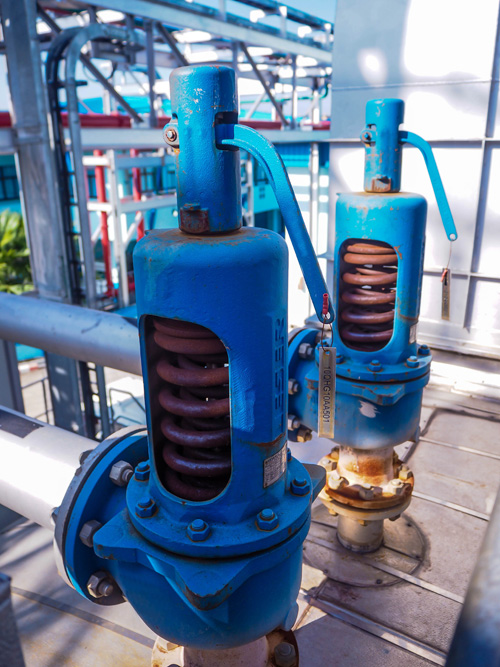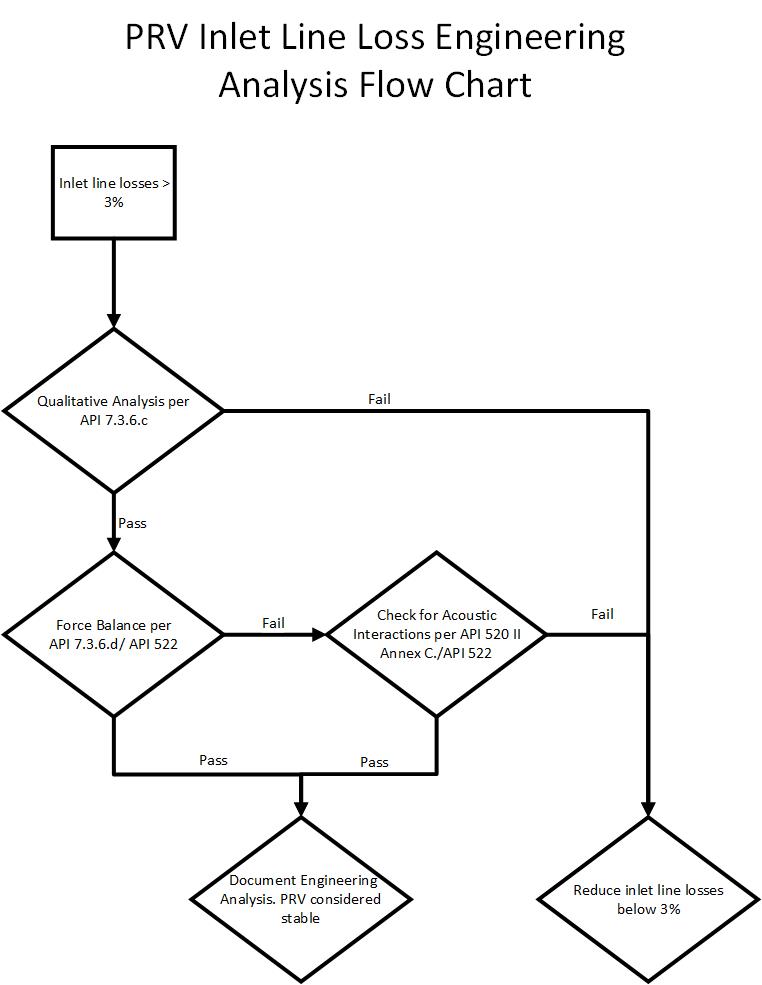
Written by: Jackson Udy, PE
Process Engineer at Process Engineering Associates
September 17, 2024
Over the past decade, an increased emphasis on pressure safety valve (PSV) systems has led to increased scrutiny of existing installations in many plants. Often these evaluations uncover gaps between a plant’s existing PSVs and recognized and generally accepted good engineering practice (RAGAGEP). Remedying these issues can lead to costly modifications. One of the most common issues operating companies run into is the 3% rule. Fortunately, new guidance by the American Petroleum Institute (API) on ‘engineering analysis’ allows for operating companies to potentially exceed the 3% rule and avoid costly facility modifications.
What is the 3% rule?
The 3% rule states that the non-recoverable pressure drop in the inlet piping to a PSV should be less than 3% of the valve set pressure. This guideline was developed as a way to ensure PSV stability and prevent valve chatter. Further, PSV relief capacities are based on the stagnation pressure at the nozzle inlet. Inlet losses that exceed 3% cannot be ignored when determining PSV capacity (see 520,II, 7.3.2 ). The 3% rule is cited in various standards, most notably API 520 Pt II and ASME Sec VIII Div I Appendix M. OSHA considers the 3% rule RAGAGEP, and thus it is considered a requirement for installed PSVs. The conventional way to meet the 3% rule for existing installations is through physical modifications such as:
- Installing a remote sensing pilot operated relief device or other relief device (such as a rupture disk) that is expected to operate in a stable range with inlet line losses above 3%.
- Reduce the capacity of the PSV, such that inlet line losses are reduced. This may be accomplished with a smaller orifice size or a restricted lift.
- Installing larger and/or shorter inlet piping to the PSV.
All of the above solutions require physical changes that may require significant capital expense
or may not even be feasible for some systems. However, there is another option to
consider to potentially avoid these costly modifications.
Engineering Analysis of PSV Stability
API 520 Pt II states that the 3% may be exceeded if “an engineering analysis is performed”. Historically many installations throughout the chemical and refining industries have not followed the 3% rule. In the past, it was not uncommon for operating companies to accept inlet pressure drops up to 5%. For example, one common rule of thumb is to keep PSV inlet line losses below the PSV blowdown percentage, plus some safety factor. This was often considered a sufficient ‘engineering analysis’ to exceed the 3% rule. However, API 521 Pt II has provided more definition on what should be included in an engineering analysis in the latest (7th) edition.
An engineering stability analysis usually consists of qualitative and quantitative assessment. The qualitative assessment typically includes a review of PSV relief history and inspection/repair reports to identify any history of chatter. If a qualitative analysis shows no signs of chatter the quantitative analysis is performed. A quantitative analysis consists of both a force balance and acoustic analysis.
What is a PSV Force Balance?
A PSV force balance is used to determine if a PSV is expected to stay open during a relief event by
comparing the sum of forces acting to open the valve against the sum of the forces
acting to close the valve. API 520 Part II gives an equation for a conventional PSV force balance as:
Popen – ΔPf,wave – ΔPwave – ΔPbuilt-up > Pclose
Where Popen is the relief pressure, ΔPf,wave is the frictional pressure drop as the PSV is opening, ΔPwave is the recoverable wave line losses, ΔPbuilt-up is the built up backpressure, and Pclose is the reseating pressure. A relief device would ‘pass’ the force balance if the relief pressure minus all of the pressure losses was still greater than the reseating pressure. This indicates that the PSV will stay open even as the pressure wave moves through the inlet piping, indicating that the valve will likely be stable during relief.
Performing an Acoustic Analysis
Suppose that the force balance inequality above is not met? Then the PSV may be expected to reseat during relief, possibly leading to unstable operation. However, an acoustic analysis can determine if the reflection of the pressure wave will reach the PSV inlet before or after the valve closes. To perform an acoustic analysis, a ‘critical’ line length is calculated. A line length near or above the critical line length indicates that instability may occur. API 520 Part II defines the critical line length as follows:
Lcrit = Cto / 2
Where C is the speed of sound, and to is the PSV opening time.
Putting it all together

Based on the new API guidelines, an engineering analysis including both a qualitative and quantitative assessment could allow non-recoverable pressure losses in the inlet piping to exceed the 3% using conventional PSVs. The flowchart below outlines the process of performing such an engineering analysis.
By performing these steps, operating companies can avoid costly physical modification to their facilities, while ensuring that they are meeting RAGAGEP guidelines and preventing PSV instability. If you have PSV systems that do not meet the 3% rule, or you are unsure what the inlet pressure drop for your system is, reach out to us at Process Engineering Associates. We have extensive experience with relief system evaluation in a variety of industries. Give us a call to see how we can potentially help you avoid costly modifications and have peace of mind that your PSVs will operate as expected.
References
1. American Society of Mechanical Engineers, ‘Boiler and Pressure Vessel Code, Section VIII, Division I, Rules for the Construction of Pressure Vessels’ (2019).
2. American Petroleum Institute, ‘API Standard 520, Sizing, Selection, and Installation of Pressure-Relieving Devices, Part II – Installation’, 7th edition (2020).

